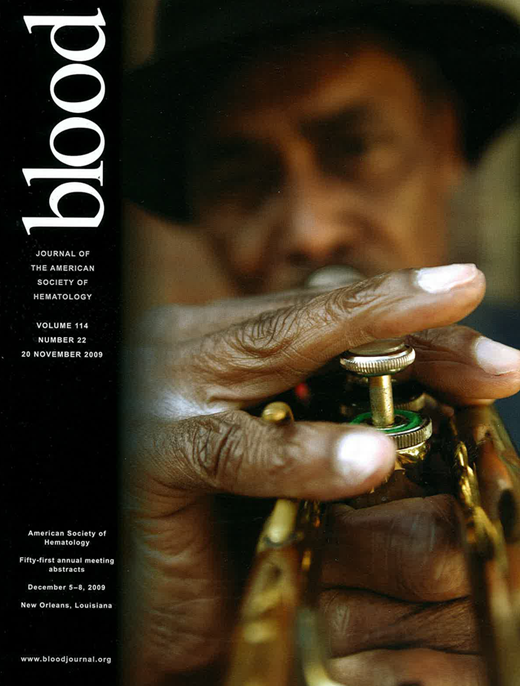Abstract
Abstract 2058
Poster Board II-35
Therapy of AML for elderly pts (≥ 60 yrs) remains challenging with low response rates, short durability of responses, and high toxicity rates following conventional therapy with standard-dose ara-C/anthracycline combinations. Clofarabine is a novel deoxyadenosine nucleoside analogue with single agent activity in frontline AML for older pts with ≥ 1 unfavorable prognostic factors. We have recently reported results of a randomized study suggesting higher response rates and comparable safety profile with the combination of clofarabine plus low-dose cytarabine over clofarabine alone. We have designed the current study of clofarabine plus low-dose cytarabine induction followed by consolidation with clofarabine plus low-dose cytarabine alternating with decitabine to maintain high response rates and improve disease-free survival based on the following hypotheses: 1) to extend duration of therapy by administering lower doses of the agents; and 2) to provide multiple drugs with different mechanisms of action to decrease risk of resistance. Pts were eligible if ≥ 60 yrs of age with newly diagnosed AML. Pts were excluded for ECOG PS > 2, creatinine > 1.5 mg/dL, cardiac ejection fraction < 40%, and prior therapy with clofarabine or decitabine. Induction therapy consisted of clofarabine 20mg/m2 i.v daily × 5 days plus cytarabine 20mg s.c. twice daily × 10 days in a laminar air flow room. Responding pts could receive up to 17 courses of consolidation therapy of clofarabine plus cytarabine (over 3 and 7 days, respectively) during consolidation courses 1-2, 6-8, 12-14) alternating with decitabine 20mg/m2 i.v. daily for 5 days during courses 3-5, 9-11, and 15-17. All pts received antibiotic prophylaxis with levofloxacin, valacyclovir and itraconazole (or equivalent). Forty pts have been enrolled with a median age of 70 yrs (range 60-80) of whom 22 (55%) had secondary AML (antecedent hematologic disorder in 11 pts). Two pts had received previous azacitidine for MDS. Fourteen pts (35%) had abnormal cytogenetics of whom 10 (25%) had monosomy 5, 7, or both. Four patients (10%) had a FLT3/ITD mutation. Of the 34 pts evaluable for response, 20 (59%) achieved CR and 2 (6%) CRp for an OR rate of 65%. Only 2 pts required 2 courses to CR. The OR rate for patients with diploid versus abnormal cytogenetics was 80% vs 50%; for pts with prior MDS versus no prior MDS 76% and 50%; and 75% for patients with FLT3 mutation. The median time to CR/CRp was 38 days (range 27-103). With a median follow up of 3.5 months (range 0.7-8.1), 2 pts relapsed (CR duration of 3.3 and 4.2 months, respectively); responses are ongoing in the remainder. Three pts (9%) died during induction therapy (one during re-induction) before a response could be established. The median number of consolidation cycles received by pts in CR was 3 (range 1-5). Most toxicities were ≤ grade 2 and included nausea/vomiting, diarrhea, rash, headache and mucositis. Six pts developed grade 3 elevations in serum transaminases which resolved at the end of induction therapy. Myelosuppression and neutropenic fever were common, but prolonged myelosuppression was rare. In conclusion, clofarabine plus low-dose cytarabine achieves high response rates with a manageable toxicity profile and low induction mortality in elderly pts with previously untreated AML. Time-to-event parameters will be provided with more extensive follow up.
Off Label Use: Clofarabine and Decitabine in AML. Kantarjian:Genzyme: Consultancy, Research Funding. Faderl:Genzyme: Consultancy, Research Funding; Eisai: Research Funding, Speakers Bureau.
Author notes
Asterisk with author names denotes non-ASH members.

